So it’s happened. A nickname coined by gearheads based on a chassis code uttered among only the otaku-est of drift/touge/rally nerds has been plucked from obscurity to become its own actual model name. Over the Thanksgiving holiday ToMoCo announced that the car we’ve known only (in Japan at least) as the FT-86, new FR Sports, or “new lightweight sports car,” will, after much speculation, be called simply the Toyota 86.
How many times in history has a nickname or a chassis code become the nameplate itself? The only other example we can come up with is another Toyota, the FJ Cruiser. In Europe, it will be called the GT 86, but both Olde World and Nihon versions will feature the same “86” badge on the fenders inspired by the boxer engine that powers the car.
Yes, that boxer reminds us of its Subaru origins but don’t be sad, Toyotaku. Toyota is quick to point out that its 50 year sports car history began with the Toyota Sports 800, which was powered by a two-cylinder 800cc boxer engine.
In production guise its big grille and rear haunches gives it more the semblance of a baby JZA80 Supra than the Corolla GT-S/Levin/Sprinter Trueno (except for its 2000GT-esque C-pillar, of course). The neo-hachiroku‘s spec sheet promises 197 horsepower at 7000 rpm, 151 pound-feet of torque, and a curb weight of approximately 2,650 pounds.
Here’s a video of multi-colored 86s (Gawd, it feels weird to say that!) being test driven in Japan. We will have much more coverage as the most interesting Toyota in years makes its debut in the coming days. But for now, here’s the official Toyota 86 website and a press release in which the Big T touts its half-century of sports car manufacturing.
MORE PASSION, MORE FUN: TOYOTA RECAPTURES THE JOY OF DRIVING
World debut for Toyota GT 86 sports car at the Tokyo motor showKEY POINTS
Entirely driver-focused sports car, designed to recapture the fundamental joys of motoring
World’s most compact four-seater sports car, delivering very low centre of gravity and excellent power-to-weight ratio
A return to Toyota’s sporting roots, with a front-mounted engine and rear-wheel drive package
Powertrain combines 197bhp 2.0-litre flat-four boxer engine with torque-enhancing D-4S injection technology
Design achieves outstanding aerodynamics while recalling Toyota’s sports car heritage
New car to be called the GT 86 in Europe, in tribute to Toyota’s GT car heritage
On sale in the UK in June 2012
The anticipation is over: Toyota’s new GT 86 sports car makes its world debut at the Tokyo motor show on November 30. The compact 2+2 model, one of the most keenly awaited new cars of the coming year, will go on sale in the UK in June 2012.The GT 86 has been conceived as an entirely driver-focused machine, designed to deliver the core qualities of the classic sports car experience. That means precise, instant response to the smallest throttle and steering inputs and the kind of performance that appeals to those for whom driving is a passion, not a necessity.
The GT 86 is built on a new platform, with a highly aerodynamic bodyshell stretched tight over the car’s mechanical elements. Rather than fitting a heavy, large capacity powertrain, Toyota has opted instead to go back to its sporting roots, installing a compact, front-mounted, free-revving petrol engine that drives the rear wheels.
This four-cylinder “boxer” unit generates 197bhp at 7,000rpm and maximum torque of 205Nm at 6,600rpm, giving the GT 86 brisk, engaging performance.
The powertrain is matched to the world’s most compact four-seat design to create a car that benefits from light weight, low inertia and a low centre of gravity to achieve the best possible power-to-weight ratio. For the driver that means lively, accessible performance and dynamic character with minimal intrusion from electronic systems.
Packaging
The GT 86 measures 4,240mm long, 1,285mm high and 2,570mm wide, dimensions which make it the most compact four-seater sports car available today.
Both the powertrain and the driving position have been set as low and as far back as possible to achieve the best balance: the car has a near-perfect 53:47 front-to-rear weight distribution. The flat-four engine format and the driver’s hip point – the lowest of any current Toyota production model – together give the GT 86 an ultra-low centre of gravity, at just 475mm.
The GT 86 makes the most of a light kerb weight, making it easy for drivers to exploit its nimble handling and cornering poise. The suspension features MacPherson struts at the front and double wishbones at the rear. The car rides on 17-inch wheels and is fitted with ventilated disc brakes fore and aft.
World’s first horizontally opposed engine with D-4S
The GT 86’s engine is the result of a joint Toyota and Subaru development programme that brings together their technical know-how and mutual passion for sports cars.
Toyota has added its D-4S injection technology to Subaru’s new, horizontally opposed, naturally aspirated 1,998cc four-cylinder boxer engine. This system features separate twin injectors for both direct and port injection, and a high 12.5:1 compression ratio, increasing power and torque across a wide range of engine speeds without sacrificing fuel efficiency and environmental performance.
The flat-four engine has equal bore and stroke of 86.0mm and drives through either a six-speed manual or six-speed automatic transmission. The manual offers quick, precise shifts using a tactile, short-throw lever; the automatic transmission can be controlled using paddle shifts mounted on the steering wheel.
Power is distributed to the rear wheels via a limited slip differential to give the best possible grip in all driving conditions. The ABS and switchable vehicle stability control systems have been tuned specifically to deliver dynamic stability at the limit of the car’s performance envelope with minimal electronic intervention to help preserve the purity of the driving experience.
Design
The design of the GT 86 successfully works within the technical constraints of achieving the most compact dimensions possible, a low centre of gravity and aerodynamic performance inspired by motorsport technology, while also displaying evocative, sweeping styling that recalls Toyota’s sports car heritage.
Toyota’s new design language informs the styling, as in the way attention is focused on the lower part of the car with the large lower grille. Elsewhere the “keen” approach can be witnessed in the clear, expressive lines.
The lower grille’s “scorpion” look gives the GT 86 a more powerful appearance, with further sporting details including the model-specific 17-inch alloy wheels, rear spoiler, twin exhausts and the “86” piston logo that denotes the car’s special powertrain configuration.
On board, the ergonomics and function of every element the driver interacts with have been scrutinised to make driving the car as natural, instinctive and rewarding as possible. For example, the steering wheel has a 365mm diameter, making it the smallest ever fitted to a Toyota, and it is trimmed in buckskin, developed from exhaustive feedback from test drivers on how to achieve the best steering performance and grip.
The three-meter instrument cluster is arranged around a large tachometer, its design benefiting from close attention to the positioning of the displays, markings and typeface. The result is the best possible visibility and readability. The driver-focus of the cockpit is further reinforced by the carbon-effect trim, all-black roof lining, red stitching on the upholstery, aviation-style rocker switches and lightweight, aluminium pedals.
Toyota’s 50-year sports car heritage
The GT 86 may be launched as the world’s only current sports car to feature a front-mounted, horizontally opposed engine and rear-wheel drive, but it cannot claim to be the first. That honour is held by Toyota’s two-cylinder boxer-engined Sports 800, which the company began developing in 1962. Since then, Toyota has established a long history of producing exciting, driver-focused sports cars with a front-engine, rear-wheel drive format that have proved as popular with the public as they have been successful in competition.
The beautiful 2000 GT, a coupe powered by a 2.0-litre straight-six engine, was first displayed at the 1965 Tokyo motor show and helped establish Toyota’s global reputation as a sports car manufacturer.
Launched in 1971, the first Celica models featured rear-wheel drive powertrains and were praised by enthusiasts for their agility. All four Supra generations came with straight-six engines and rear-wheel drive, while from 1984 the MR2 won recognition as one of the best handling sports cars in motoring history.
The inspiration for the GT 86, however, is the Corolla GT (or Levin) AE86, a car with an enduring reputation for delivering sheer excitement and capturing the fundamental joy of driving. Its front-engine, rear-wheel drive package, compact dimensions, light weight, impeccable balance and superior power-to-weight ratio made it a must-have choice for rallying and circuit driving throughout its production life, from 1983 to 1987. Here in the UK the GT claimed two British Touring Car Championship titles and a series of top-level rally victories.
The GT 86 is a genuinely lightweight machine that offers the intimacy and involvement of a car that can be driven as though an extension of the driver’s body. In this way, it perfectly recaptures the exhilarating spirit of the last of the AE86. And, with numerous customisable parts, its shares its predecessor’s aim to be an affordable car that will evolve with its owner.


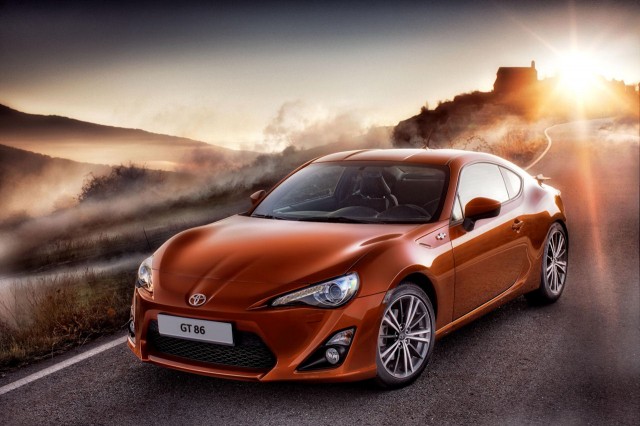
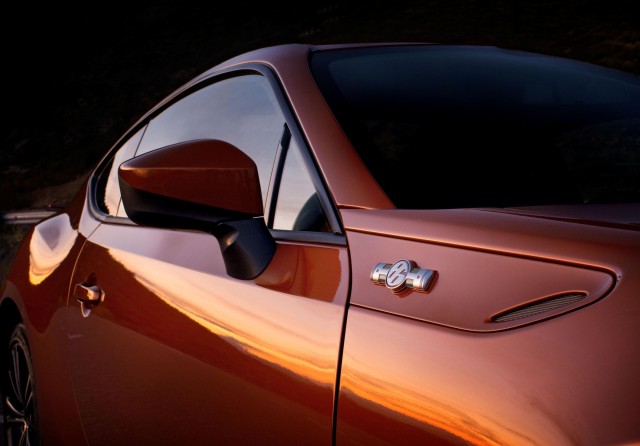

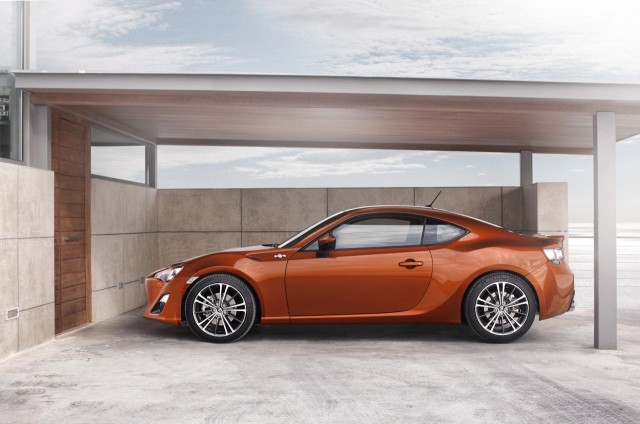
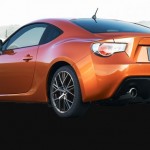
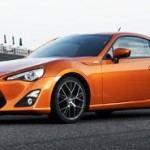

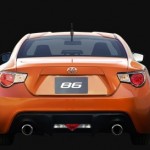
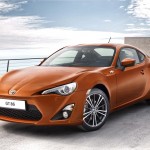

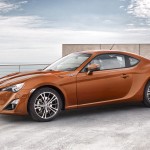

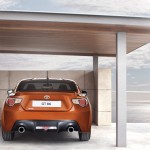





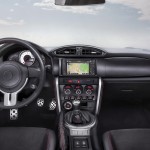





The Subaru Blue version looks great. I’m convinced it’s just this orange color that looks weird. All the 86 needs is red tail lights and a healthy drop.
Excited.
PS- may the panda photoshops commence! Haha
Wow! They actually came through! The eternal pesimist in me doubted this would see the light of day, but here we are.
Hopefully this will kick of an interesting new era of affordable and capable sports cars.
sadly, i don’t think this car will get the true respect that it so surely deserves. brought to you by the same people that make the dull camry and overly hyped prius, this amazingly balanced and proportional sports car will have entirely too many people criticizing it. there will be so many that think it should have more power, better looks, etc, etc.. i think we are all too spoiled with todays’ other cars to fully appreciate what toyota has done. i for one, look forward to the introduction of this model. i am die-hard honda fanboi, but i don’t think honda has the balls to pull off something like this. this is perfect for a driving experience. it betters the miata by two seats. (as that is my only true complaint with mine is the practicality of it).. and that should be the only comparison for this car. sadly, everything from an M3 to an evo will be thrown against it, and it will not “win” in out-rite performance, but the fact that you should be able to use it like a knife and fine tune your driving skills while using every bit of performance on tap will be it’s calling card.
no it’ll get just as much respect as it deserves
nope. it won’t.. just read the comments below..
I aslo feel this car wont get the respect it deserves. I have had friends say they wouldnt buy the Scion version that we are getting simply because the moniker isnt toyota, but they would own the Subaru model. It will be hard telling how well it will do but I think toyota has done well with the Scion brand and the 86 is well suited for it here in the states. Also your right, alot of people will be putting it up against the “better” cars. Lets see how well it performs against our other RR cars in its class, such as the S2000 and the Miata. The ability to upgrade and play with this car will probably be simple and affordable so you shouldnt have to worry about it. Come on people! 12.5:1 Copression! Think about it…
not to worry, none of the haters can afford this car anyway. lulz
Unfortunately i saw the high resolution pictures they have at flicker, if you blow them up
1. the paint is horribly orange peeled.
2. the brakes are shotty, not even painted calipers, just regular 2 piston.. Not even the 4 piston from celica.
3. The altezza lights fail, just as they failed with the altezza lights with the corolla. They need to be red.
4. the wing, needs to be removed, reminds me of a pimp your car episode.
5. the interior is ok, to much stitching.
It’s worth noting that while the release throws a lot of numbers around and references power-to-weight ratio a few times, it never really mentions what the car will weigh. Which is bullshit. This should have come with a Celica badge.
“and a curb weight of approximately 2,650 pounds.”
That figure is in the blog post, nowhere in the release – sort of telling…
Perhaps our bloggers can furnish us with their source 🙂
maybe… my point is that for all the references they want to draw to the original AE86, this car is different in almost every way. I get the premise being the same: small (relatively), lightweight (relatively), inexpensive (relatively) FR layout with manual transmission – a driver’s car. But that model doesn’t necessarily mean it shares its spirit with the old Corolla… the same formula has been applied before by other manufacturers, too. Nissan/Datsun had an entry-level car like this in the s-chassis. Mazda had the Miata (if you throw open top into the equation).
I still believe this car, as it sits, is more of a “spiritual” follow-on to the Celica, returned to its RWD roots, more of a sports car by design over a basic commuter with sporty aspirations.
I think at some point we all got tired of hearing “hatchee row-koo” coming out of everyone’s mouths, I don’t think that’s the accepted term anymore even among fanboys. Maybe this is the reason Toyota decided to offer the car under the Scion name here in the USA, to limit the number of arguments over the proper way to pronounce the car’s name… I would humbly like to offer a more simple and undoubtedly less-expensive solution to Toyota USA. Pronounce the name “toy-oh-tuh sell-ih-cuh.”
at a certain angle the body looks like a modified 1998 hyundai tiburon and the rear design kinda looks like a 2010 daewoo lacetti (chevy cruze)..the design is not evolving from the AE-86 body…… i still look back and love the classic shape of the AE-86
We all know this won’t be anything like the AE86, but hopefully people would buy this car, tune the crap out of it and start using it for drifting. Now leave the poor AE86 chassis alone! Stop the abuse and destruction of these cars on the track, and begin to appreciate/preserve them!
I LOVE it. I WANT it. BADLY! I think it’ll cost more than what we all were hoping/projecting tho. I’m predicting staring at $25k, which is still pretty good.
SOLD. i’m leaning towards a white one. it’ll look sweet next to my 86 coupe 🙂
I really want to like this car. BUT. I just looks like a mash of other cars. Integra head lights, Mazda 6 guard profile, WRX sedan tail lights. WRX seats which if you are of decent width across the shoulders are really uncomfortable. Infact my girlfriend asked if was the new Sylvia.
The badge looks like some sort of Nazi-esc symbol also.
Maybe its just a representation of how all cars are starting to look the same.
I expected something much better and stand alone.
BLAND.
keep sylvia out of it … oh i think you mean silvia … lulz
thats so awesome!!
I love it. Absolutely love it.
I think this looks good. But just good, not great. I am excited, however, that one of the Japanese makers has finally saw fit to bring back a legit under $30K RWD sport compact. The Z is good, but plays in a different price tier. The Miata is a top-down roadster. The Civic Si is a bland FWD that has been stripped of real excitement (how about a new Type R, Honda??). My only hope is that with Toyota (and Subaru) committed to these types of cars again, this will reignite the fire in the other nameplates to bring back their iconic low-buck sport compacts.
Once the price started crowding an R-Spec Hyundai Genesis Coupe (and it looks like it will cost MORE), it lost me. The Hyundai has (quite a bit) more power for the same money.
I reeeeally hope they offer a decently-equipped sub $22k version. But I doubt it.